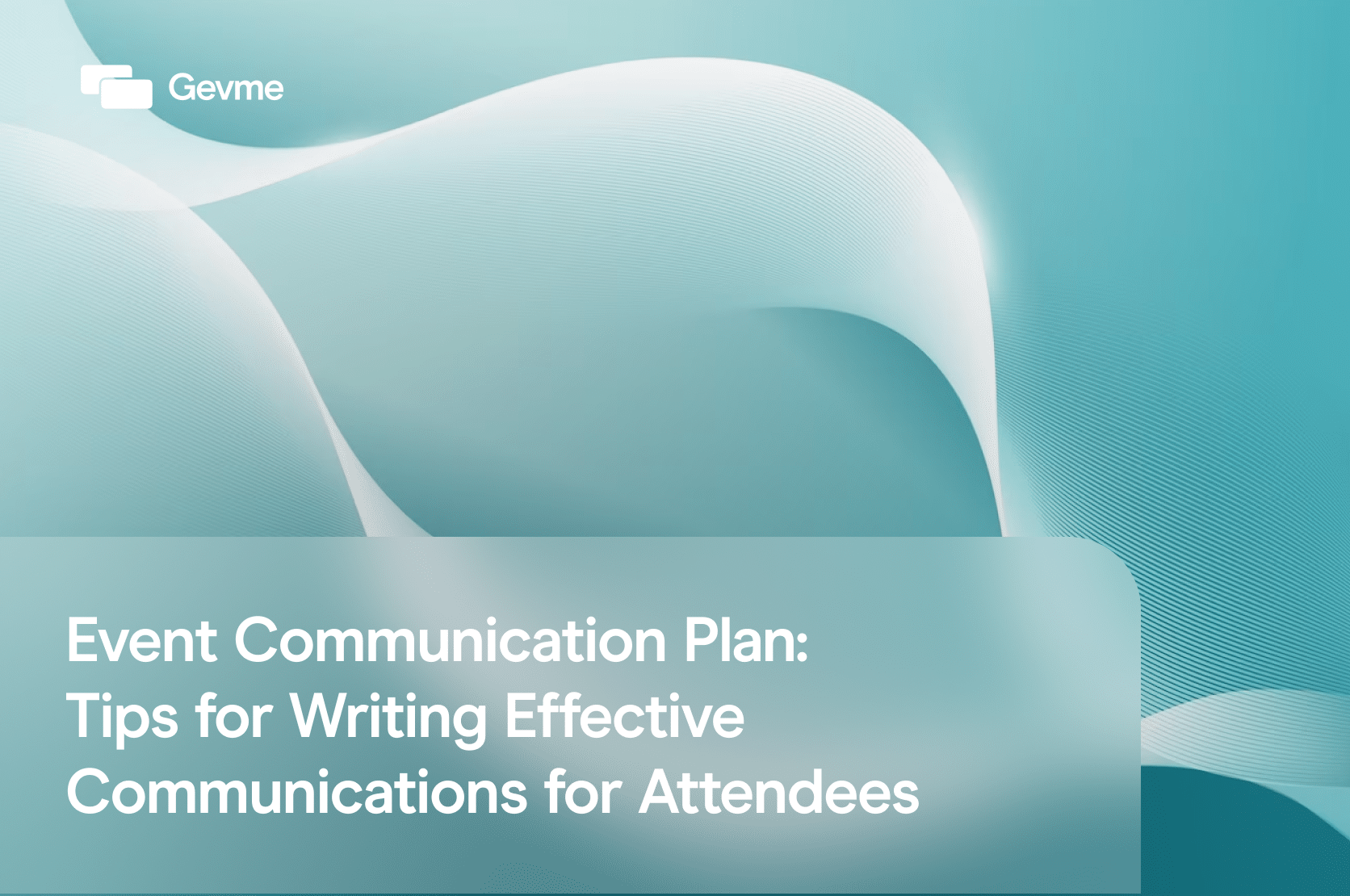In the world of events, an effective event communication plan takes the front seat. From invitations that drive attendee registration to event content for attendees to post-event communications, everything needs to be clear and concise.
Therefore, event professionals should make sure to bring their A-game when planning event communication plans and drafting various communications to get high conversion rates and ROI. In this blog we will dive into what is event communication plan, the types of communication at various stages of an event and how to write them effectively.
What is an event communication plan?
An event communication plan is a road map for organising and managing your communication efforts across an event. It includes objectives, identifying the target audience, plans, deadlines, and other information to make sure that event participants, significant stakeholders, and other interested parties are promptly notified about the event.
An event communication plan should cover a range of mediums, including social media, email marketing, fliers, and referrals. Event professionals can make sure that their event has high attendance by defining their target audience, crafting a compelling message, and selecting the most efficient methods to communicate with them.
A comprehensive event communication plan can help organisers anticipate and manage any possible issues while keeping transparency and accountability throughout the planning process. Investing in a carefully thought-out event communication plan can ensure the success of any event and make achieving results easier.
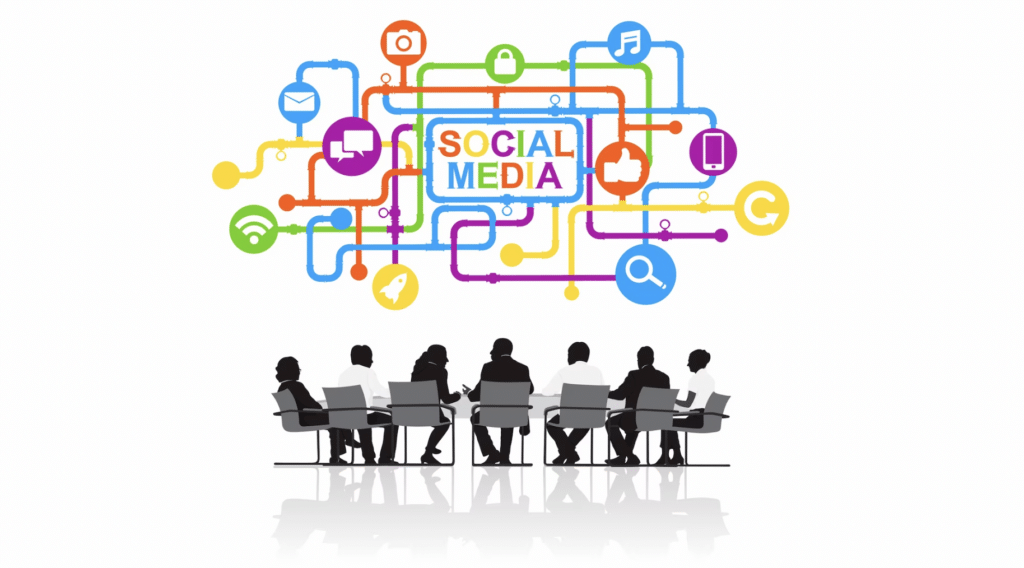
The S.M.A.R.T– Specific, Measurable, Achievable, Relevant, and Timely- framework can be used by organisers to structure their event communication plan. You can swiftly create a communication plan using these five categories as a general structure.
Types of communication at various stages of the event
Various channels serve different purposes from enhancing engagement to information dissemination. Let’s delve into the types of communication at various stages of an event that organisers can use to communicate with their attendees before as well as after the event:
Before an Event: To Drive Attendee Registration
Emails: Pre-event emails are a vital catalyst for driving event registration, playing a pivotal role in generating anticipation, raising awareness, and compelling potential attendees to commit. By providing essential event details, addressing concerns, and offering incentives such as early-bird discounts, these emails create a sense of urgency and value that encourages prompt registration.
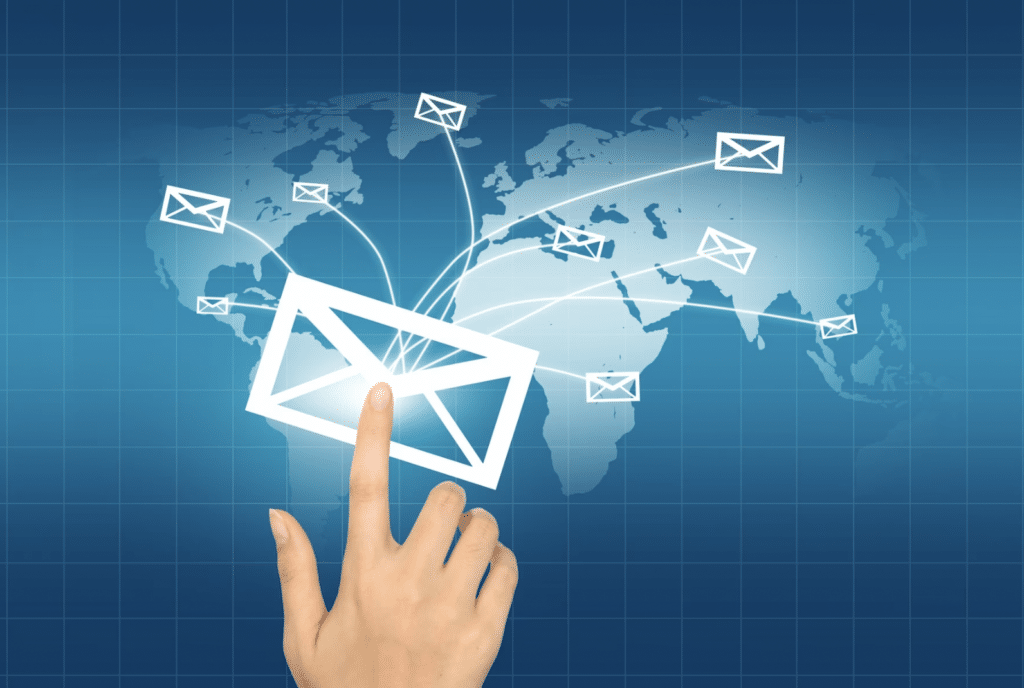
Moreover, pre-event emails serve as a direct line of communication, allowing organizers to engage recipients with personalized messages, tailored content, and event updates, thus setting the stage for a successful event turnout and fostering a positive attendee experience.
Event Website: The event website is a crucial part of an event communication plan as it acts like a central hub for all event-related information, including schedules, speakers, sessions, and logistics, playing a crucial role in driving registration. It creates a powerful first impression, conveying professionalism and building confidence among potential attendees. Through clear communication of event logistics, fees, and special offers, the website minimizes friction in the registration process. Engaging content and visuals on the website generate excitement and anticipation, motivating prospective attendees to secure their spots. On top of that, personalized recommendations and networking opportunities enhance the attendee experience and foster a sense of community.
Beyond registration, the website continues to play a role in ongoing communication, post-event resources, and future event promotion, making it a critical tool for ensuring successful event attendance and engagement. Attendees can visit the website and get all event-related details.
Social Media: Social media serves as a dynamic platform to generate anticipation, boost awareness, and engage potential attendees, making it necessary for an event communication plan. Through strategic and targeted posts, organizers can create a buzz around the event, sharing teasers, speaker highlights, and agenda sneak peeks to pique curiosity and build excitement.
Leveraging social media’s wide reach, event details can rapidly spread, reaching a vast and diverse audience. Interactive elements like polls, quizzes, and countdowns encourage active participation, fostering a sense of involvement even before the event begins. Sharing user-generated content and testimonials from past events establishes credibility and showcases the event’s value. Additionally, social media enables direct engagement, answering queries, and addressing concerns, thereby creating a seamless and personalized experience that encourages potential attendees to register and actively participate in the event.
Mobile apps: Mobile apps play a pivotal role in an event communication plan before an event by offering attendees a comprehensive and interactive platform for accessing event information, creating personalized schedules, and engaging with event content. These apps facilitate networking and encourage active participation through interactive features. Push notifications keep attendees informed about updates, while event promotion generates anticipation and excitement. Mobile apps also offer valuable data insights to organizers, contributing to a seamless and engaging pre-event experience that enhances attendee preparedness, engagement, and overall satisfaction.
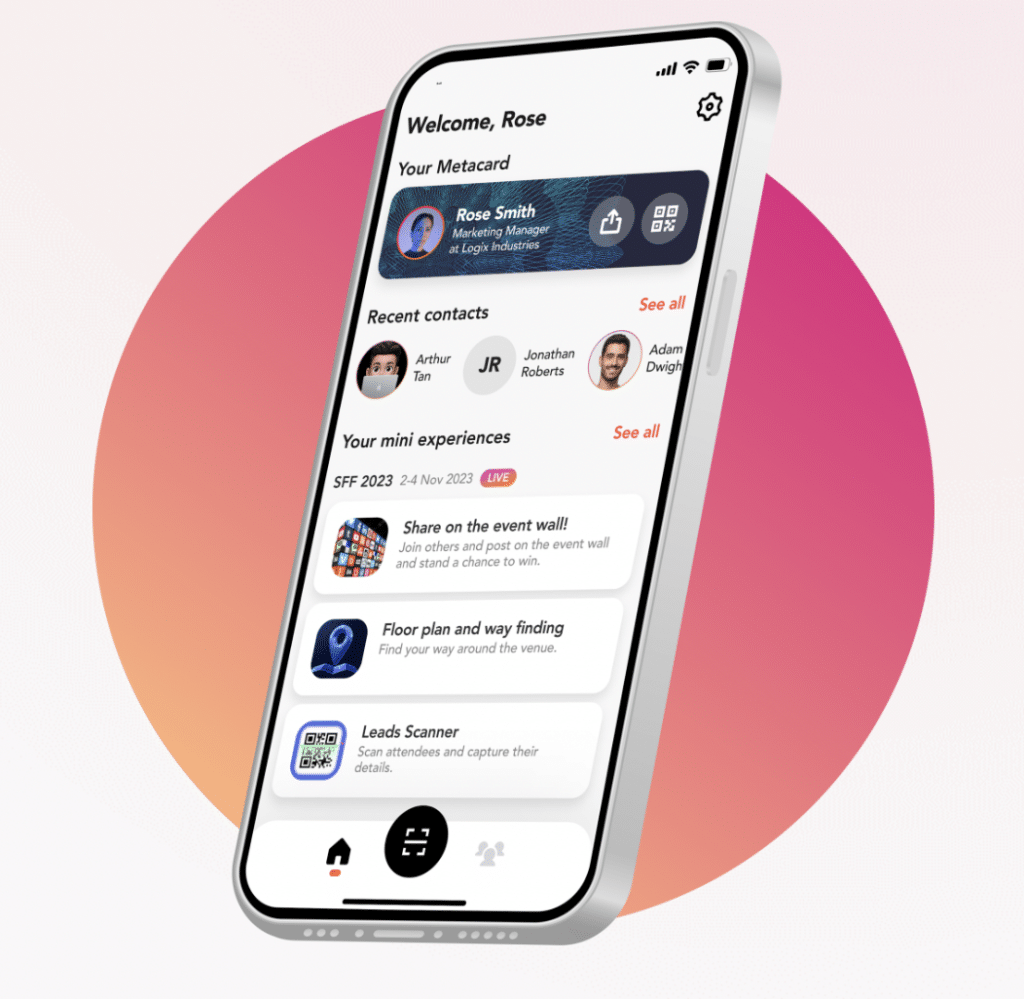
Printed Materials: Printed materials are a tangible guide that conveys event information and fosters engagement. These materials, encompassing brochures, programs, and flyers, provide attendees with a comprehensive view of the event’s schedule, speaker profiles, and venue layout, ensuring easy access to critical information without digital reliance.
Beyond functionality, they contribute to the event’s visual identity, portraying a consistent and professional image that resonates with attendees. The physicality of printed materials creates tangible reminders and offline engagement opportunities, allowing attendees to mark sessions, take notes, and network. Additionally, these materials extend promotional reach, offer visibility to sponsors, and offer a lasting connection to the event experience as souvenirs. In an increasingly digital world, printed materials offer a valuable dimension to pre-event communication and preparation.
Text messages: Text messages before an event hold significant value as they establish an immediate and direct line of communication with attendees, ensuring crucial event-related information reaches them promptly. With high open rates and personalized engagement, text messages deliver reminders, updates, and calls to action, encouraging timely registration, planning, and participation.
Leveraging the accessibility of mobile devices, these messages provide attendees with on-the-go access to event details and resources, fostering engagement. Additionally, text messages facilitate last-minute reminders, and offer a segmented approach to cater to diverse attendee preferences. Their efficiency, cost-effectiveness, and ability to drive swift responses make text messages a potent tool in an event communication plan.
After an event: To Enhance Attendee Experience
Follow-Up Emails: Follow-up emails are a vital aspect of the post-event communication plan, sent to attendees after an event concludes. They serve as a means to express gratitude for participation, extend engagement by sharing event highlights and resources, and encourage feedback through surveys.
Emails can be used to promote future events, fostering ongoing interest and networking opportunities. With concise event recaps, resource sharing, and personalized content, follow-up emails aim to provide value, gather insights, and nurture attendee relationships beyond the event’s timeframe. They play a pivotal role in enhancing the attendee experience, maintaining engagement, and shaping future event endeavours.
Social Media: Through event recap posts, user-generated content sharing, and feedback testimonials, social media helps in sustaining attendee engagement, extending the event’s impact. Sharing resources, engaging prompts, and behind-the-scenes glimpses humanize the experience, while teasers for upcoming events maintain attendees’ interest.
By leveraging social media, event organizers create a dynamic platform for ongoing discussions, knowledge sharing, and community building, ensuring a lasting and valuable connection with attendees.
Event Recap Blog Posts: Post-event blogs offer an in-depth exploration of event topics, recapping key sessions, and providing additional resources for continued learning. These blogs enable attendees to reflect on the event, share their insights, and engage with a community of like-minded individuals through comments and discussions.
Additionally, post-event blogs contribute to online visibility & SEO and create a lasting narrative that extends the event’s impact, making it an extremely crucial part of the event communication plan.
Feedback Surveys: Feedback surveys provide a direct avenue for attendees to express their opinions, experiences, and suggestions. These surveys offer valuable insights into attendee satisfaction, event content, logistics, and overall effectiveness.
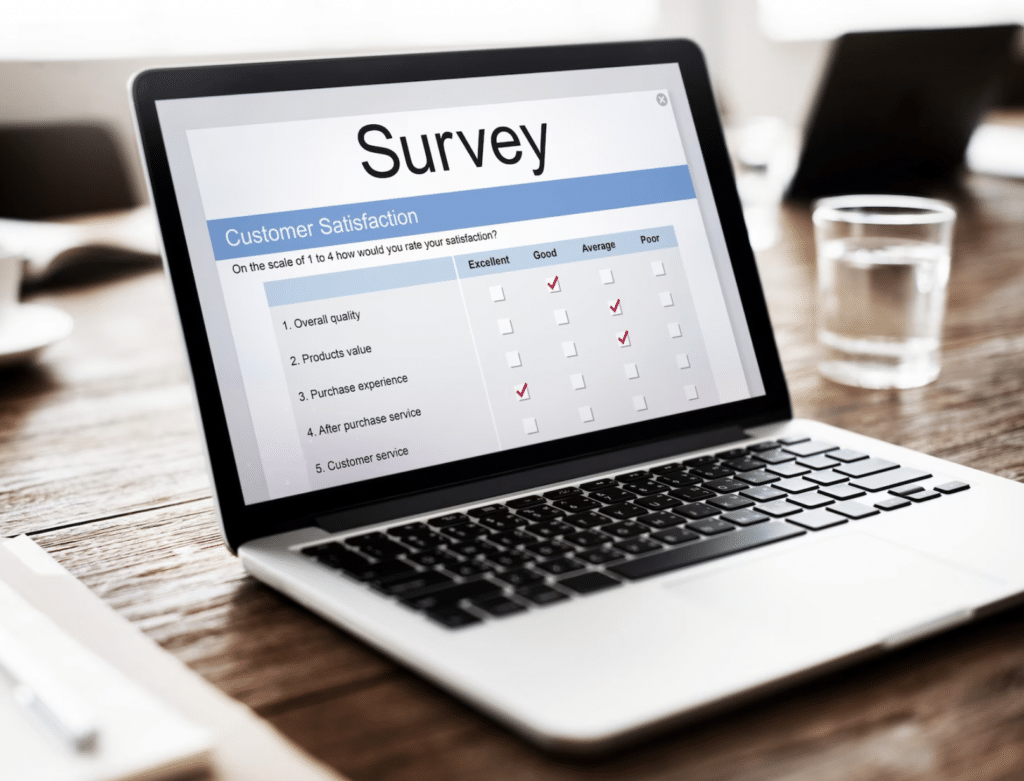
The collected feedback helps event organizers identify areas of success and areas needing improvement, enabling them to refine future event planning and execution. By understanding attendee perspectives and addressing their concerns, feedback surveys facilitate continuous enhancement, ensuring that subsequent events are better tailored to meet attendee expectations, resulting in higher participant satisfaction and more impactful experiences.
Networking Platforms: Networking follow-up involves actively encouraging event attendees to nurture and sustain the connections they formed during the event, extending the benefits of networking beyond the event’s duration. This post-event outreach serves as a reminder for participants to reach out to newfound contacts, connect on professional platforms, and continue engaging in meaningful conversations initiated during the event.
This effort reinforces the event’s value by translating initial interactions into lasting relationships that contribute to individual growth, professional opportunities, and a stronger sense of community within the industry or field.
Certificates and Resources: Certificates and resources offered to attendees after an event contribute to the overall value and impact of the event experience. Certificates of participation or achievement not only recognize attendees’ active involvement but also provide tangible proof of their commitment to continuous learning and professional development. These certificates can be added to resumes, portfolios, and social media profiles, enhancing attendees’ credibility and showcasing their engagement with relevant industries or subject matter.
Moreover, providing resources such as presentation slides, session recordings, and supplementary materials extends the learning beyond the event’s timeframe. Attendees can revisit and review the content, reinforcing their understanding of key concepts and enabling them to share valuable insights with colleagues who did not attend.
Tips for writing effective communications for an event
Mastering the art of writing various types of communication in an event communication plan requires a strategic and comprehensive approach. Here are a few pointers that event organisers should keep in mind:
Understand Target Audience and Set Objectives: Begin by identifying your target audience for each communication type. Understand their preferences, needs, and expectations to tailor your messages effectively. Define the purpose and goals of each communication and overall event communication plan. Whether it’s driving registration, sharing information, or fostering engagement, having clear objectives will guide your writing.
Compelling Subject Lines: Craft attention-grabbing subject lines that create curiosity and entice recipients to open the email. Use phrases like “Don’t Miss Out,” “Join Us Live,” or “Exclusive Event Invitation” to generate interest.
Personalized Invitations: Addressing recipients by their names and customizing the email content to align with their specific interests is a strategic approach that goes beyond a generic one-size-fits-all communication strategy. Personalization injects a sense of familiarity and individuality into the communication, establishing a connection that resonates on a more personal level. When an email begins with the recipient’s name, it immediately captures their attention and imparts a feeling of being addressed directly. This initial engagement sets a positive tone and primes the recipient for more attentive reading.
Clear and Concise Messaging: Clearly communicate the purpose and value of the webinar or event in a concise manner. Highlight key benefits and values that the audience will gain from the event
Segmented Email Lists: Segment your email list based on interests, demographics, or past engagement to deliver targeted messages. Sending relevant content to specific segments increases the likelihood of conversion and registration.
Include Call to Action (CTA): Every communication should have a clear and compelling call to action, prompting the audience to take the desired action, whether it’s registering, sharing, or engaging.
A/B Testing: A/B testing is a strategic approach employed within an event communication plan, particularly for critical or high-impact communications, to optimize their effectiveness and resonate more effectively with the target audience. This method involves creating two or more variations of the same communication – such as an email subject line, social media post, or call to action – with slight differences in content, wording, design, or presentation. These variations are then sent to different segments of the audience, and their responses are meticulously analyzed to ascertain which version garners higher engagement metrics, such as open rates, click-through rates, or conversions.
Conclusion
Crafting a well-executed event communication plan is an indispensable pillar of successful event management, ensuring seamless interactions, informed attendees, and a resonating event experience. Recognizing the significance of a comprehensive event communication plan that covers various channels, from traditional to digital, is crucial for reaching and engaging diverse audiences.
The channels, ranging from emails and social media to mobile apps and printed materials, offer a multifaceted approach that caters to different preferences and communication styles. Event organizers can pave the way for a successful event that captivates attendees, leaves a lasting impression, and experiences with the help of an effective event communication plan.
